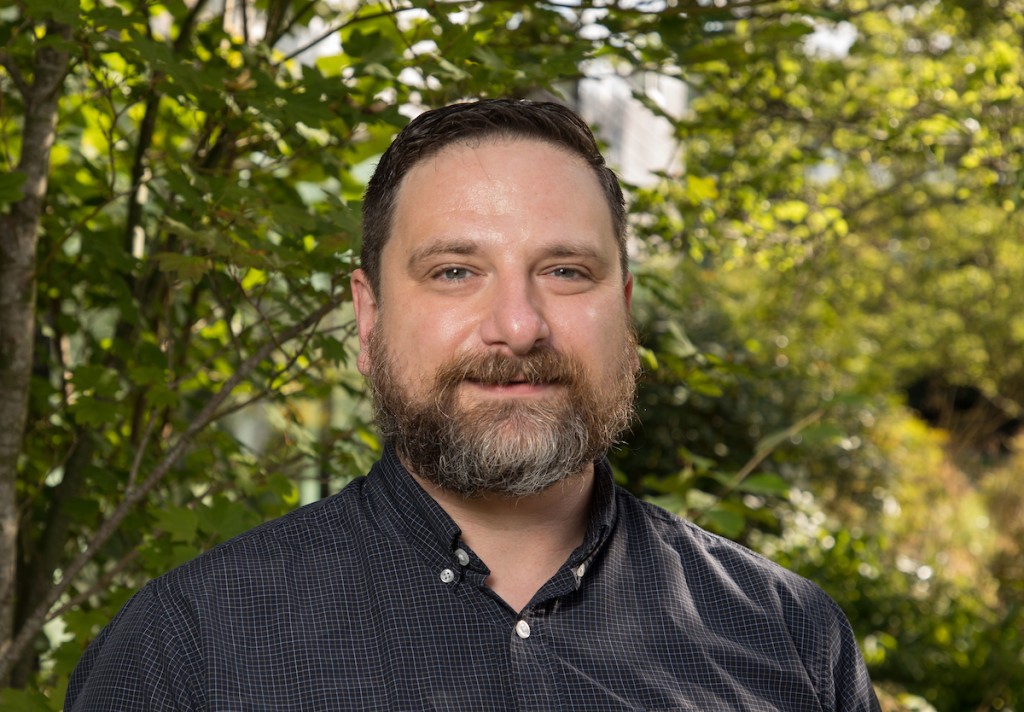Page 1 • (6 results in 0.064 seconds)
-

Professor of Chemistry | Pre-Health Sciences Advising | yakelina@plu.edu | 253-535-7554
Neal Yakelis Professor of Chemistry Phone: 253-535-7554 Email: yakelina@plu.edu Office Location: Rieke Science Center - 250 Professional Education NIH Kirschstein Fellow, University of California Berkeley, 2003-2005 Ph.D., Chemistry, University of Michigan, 2003 B.S., Chemistry, Spanish minor, Allegheny College, 1997 Areas of Emphasis or Expertise Diels-Alder and retro-Diels-Alder reactions Synthesis and reactions of substituted N-hydroxyureas Drug-polymer conjugation Antimicrobial natural
-

Professor of Chemistry | Department of Chemistry | yakelina@plu.edu | 253-535-7554
, Allegheny College, 1997 Areas of Emphasis or Expertise Diels-Alder and retro-Diels-Alder reactions Synthesis and reactions of substituted N-hydroxyureas Drug-polymer conjugation Antimicrobial natural products Green chemistry Responsibilities CHEM 115: General Chemistry I with Laboratory CHEM 116: General Chemistry II with Laboratory CHEM 331: Organic Chemistry I CHEM 333: Organic Chemistry I Laboratory CHEM 332: Organic Chemistry II CHEM 334: Organic Chemistry II Laboratory CHEM 336: Organic Special
Office HoursMon: 2:00 pm - 4:00 pmTue: 2:00 pm - 4:00 pmWed: 11:00 am - 12:00 pmFri: 1:00 pm - 3:00 pmMon - Fri: - -
Emily Bond, Senior Capstone Seminar When facing a nonlethal selective pressure, cells are in a state of growth arrest, meaning that they are not able to divide.
graphene and their high conjugation. Benzofulvenes contain a fulvene moiety within this conjugated system and are able to model how substituents affect aromaticity in this region. By changing the substituents on the exocyclic benzene ring to electron donating groups, the fulvene moiety can have more aromatic characteristics such as a low bond length alterna-tion (BLA). In this paper a procedure to synthesize benzofulvenes with varying exocyclic substituents will be outlined and six novel benzofulvenes
-
Rodion A. Zhuravlev, Senior Capstone Seminar Solid polymer electrolytes are a safer alternative to the current electrolytes found in lithium-ion batteries.
Conjugation James Okubo, Capstone Senior Seminar Imperfections in the two-dimensional structure of graphene-based electrodes have led to reduced chemical capacitance. Recent density functional theory calculations have shown that the capacitance can be improved via structural and morphological features of the electrode. The structure of the organic compounds known as benzofulvenes may act as a model for graphene. Rotation about the exocyclic double bond of benzofulvenes may change the conjugation of the
-
Shawn Brookins, Senior Capstone Seminar Alzheimer’s Disease, the most common form of progressive dementia, has transitioned among the forefront of healthcare research, lending to novel
hyperphosphorylated tau variants to the disease. This review intends to assert the validity of both hypotheses from recent induced mutation, immunoblotting, and multi-label confocal immunofluorescence studies, followed by a projection for future research. 2:20 pm - Conversion of Ureas to Hydroxyguanidines for Conjugation to Drug-releasing Polymers by Nitroso-Diels-Alder Reactions North Foulon, Senior Capstone Seminar Hydroxyguanidines are a valuable class of molecules in the field of long-acting medications
-
Sukhbir Randhawa, Senior Capstone Seminar Many different factors cause DNA damage in cells. UV radiation is one of the major factors; if a cell's DNA repair system does not keep repairing the
substituted aryl naphthalene, our group attempted to produce a 1,3-aryl naphthalene. Starting from commercially available indanone, the key C-C phenylation was achieved via nucleophilic addition of phenyl-lithium. The attempted addition of acetyltrimethylsilane to create the –TMS leaving group instead caused a Brook rearrangement, preventing the desired effect. The lack of a proper leaving group combined with the conjugation of the molecule prevented the complete rearrangement into the aryl naphthalene
Do you have any feedback for us? If so, feel free to use our Feedback Form.


